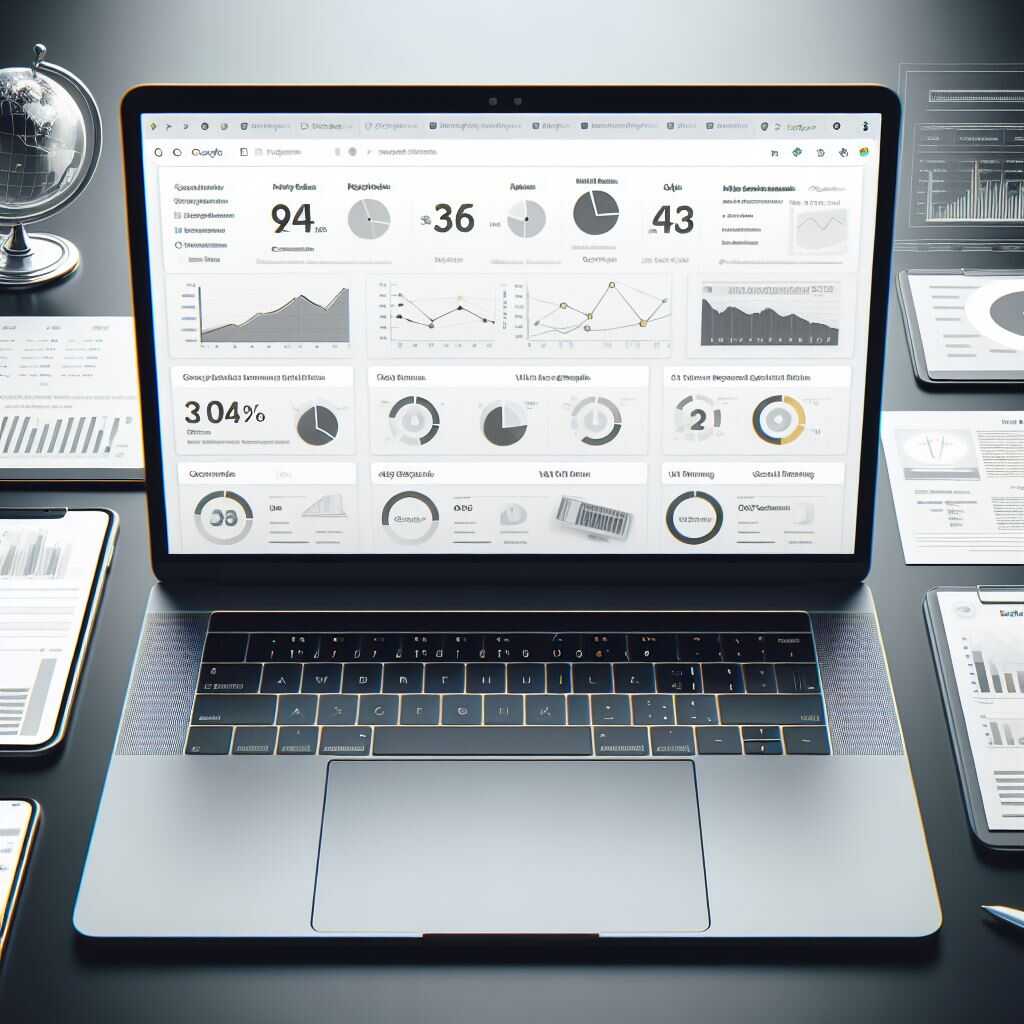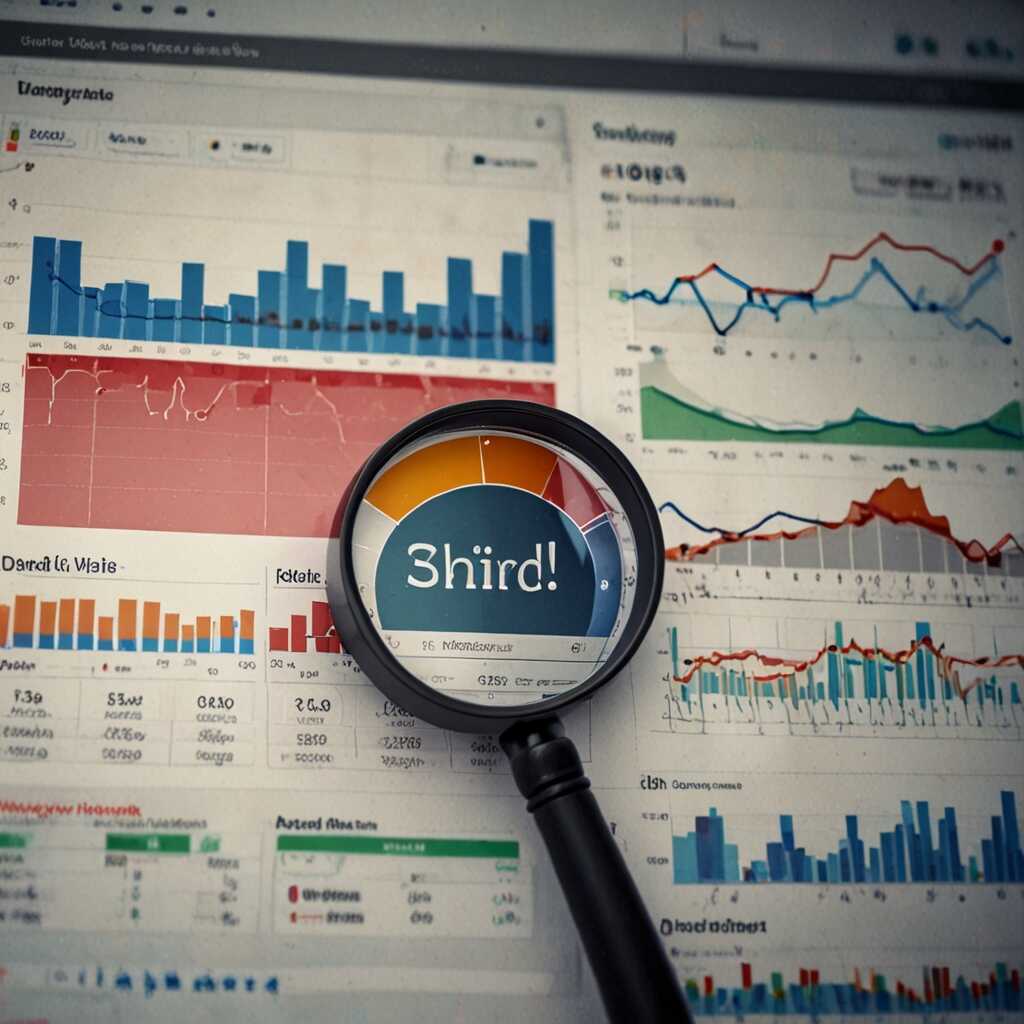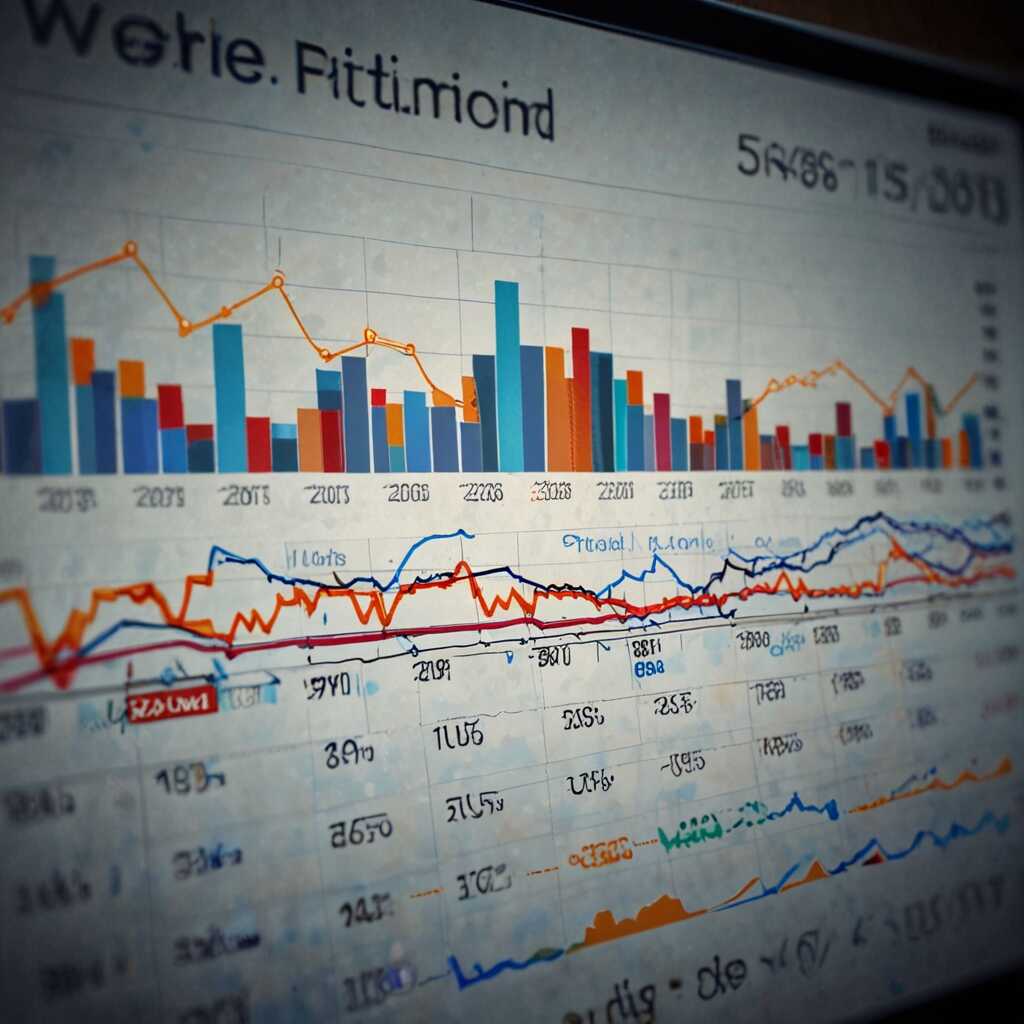Conducting an image SEO audit is essential for enhancing visibility and performance on your website. This process helps identify issues that may hinder your images from ranking well in search engines. At Metrics Rule, we aim to provide you with actionable steps to effectively audit your image SEO and uncover opportunities for improvement. By focusing on these strategies, you can optimize your images for better search engine performance and overall website success.
Understanding the Role of Images in SEO Strategy
Images play a critical role in website performance and SEO effectiveness. First, they directly affect site loading performance. Poorly optimized images can slow down loading times, which negatively impacts user experience and rankings on search engines like Google and Bing. Quality images enhance user engagement, making visitors stay longer on your site. Keeping them interested is essential, as longer visit durations signal to search engines that your content is valuable. This, in turn, can lead to improved SEO rankings. Additionally, using images effectively, through best practices like proper alt text and compression, serves to enhance the site’s accessibility and indexing capabilities for search engines.
Best Practices for Image Optimization in SEO
To effectively optimize images for SEO, start by utilizing proper image optimization techniques. This includes compressing images to improve site loading performance while maintaining quality. Research indicates that images can comprise over 60% of a webpage’s data; thus, using formats like WebP greatly enhances loading speeds. Providing descriptive alt text is also crucial, as it helps search engines understand the content of your images, further boosting your SEO ranking factors. Additionally, featuring high-quality images that are relevant to your content can significantly improve user engagement strategies and retention rates. This holistic approach enables the reliability and effectiveness of your SEO efforts, ensuring both search engines and users find your site valuable.
Identifying Common Pitfalls in Image Optimization
Recognizing common pitfalls in image optimization is essential for enhancing your website’s SEO performance. One frequent issue is missing alt tags, which can impede search engines from understanding your images. Additionally, large file sizes slow down page loading times, negatively affecting user experience and SEO rankings. Another issue is using unsuitable image formats, like BMP or TIFF, when more efficient formats like JPEG or PNG could greatly improve load speeds. Many e-commerce websites also struggle with image compression techniques, often overlooking ways to reduce file size without losing quality. Regular SEO performance analysis helps identify these issues and provides a roadmap for optimization.
Best Practices for Image Compression and Format Selection
Choosing the right image format and employing effective image compression techniques are crucial for SEO success. JPEG is ideal for photographs due to its smaller file sizes, while PNG works well for images needing transparency. Aim to keep images below 100 KB for faster loading times and improved SEO. Tools like TinyPNG or ImageOptim can help optimize images effectively without sacrificing quality. Using compliant file names that include relevant keywords further enhances image SEO. Regularly testing your website’s image load speed using Google PageSpeed Insights can help ensure your site maintains excellent performance for visitors from Vancouver and beyond.

Essential Tools for Performing Image SEO Audits
To effectively conduct an image SEO audit, several tools are essential. Tools like Google Analytics help assess traffic to image-heavy pages. Image optimization tools such as TinyPNG or ImageOptim enhance image quality without losing data. SEO audit software like Screaming Frog can crawl your website, identifying image issues like missing alt tags or large file sizes. Performance analysis tools like GTmetrix provide insights on loading speed and performance metrics, ensuring images are optimized for quick loading. Each of these tools offers valuable features designed to enhance image performance, making them vital for effective SEO audits.
Best Image Optimization Tools Available in 2025
In 2025, some of the best image optimization tools include Adobe Photoshop for editing, and TinyPNG for compression. These tools help significantly reduce image size while maintaining quality, which improves website loading speeds. Additionally, tools like ImageKit and Cloudinary offer reliable CDN services that optimize images on the fly, therefore enhancing web performance. By providing analytics and tracking image performance, these tools enable users to gather important data and make informed decisions. E-commerce sites can particularly benefit from these tools to ensure product images load quickly, ultimately boosting conversion rates.
Key Metrics to Consider During Your Review
- Image file size should ideally be less than 100 KB for faster loading.
- Use descriptive alt text for at least 90% of your images.
- Check image formats, JPEG and PNG are most commonly used.
- Ensure that 70% of your images are correctly indexed by search engines.
- Review image dimensions; aim for optimal sizes of 1200×800 pixels.
- Evaluate the load time, which should be under 3 seconds.
- At least 50% of your images should appear in relevant search results.

Best Practices for Crafting Effective Image Metadata
Optimizing image metadata is crucial to improving search visibility and user accessibility. Start by using clear and descriptive image alt attributes that convey the content and purpose of the image. Aim for concise yet comprehensive descriptions that do not exceed 125 characters. Utilize descriptive filenames incorporating relevant keywords to enhance SEO effectiveness. For example, instead of “IMG_1234.jpg,” consider “blue-running-shoes-ecommerce.jpg” to improve context. Finally, include informative captions that enrich the user experience; they should remain engaging without exceeding 200 characters while incorporating keywords naturally.
Key Elements of Effective Image Alt Text
To create effective image alt attributes, focus on using relevant keywords that describe the image accurately. Ensure your alt text conveys the intent behind the image while maintaining readability for users. It should assist screen readers, enhancing accessibility for visually impaired users. The character limit is important; keep it under 125 characters for easy comprehension. Incorporating modifiers like colors, sizes, or emotions can provide more context. For example, an image of “red-running-shoes” should include alt text like “Men’s red running shoes ideal for outdoor jogging,” which captures both imagery and intent while benefiting SEO success.

Practical Techniques for Image File Size Optimization
Reducing image file sizes while maintaining quality is essential for improving site loading speed. Effective methods for reducing image sizes include utilizing lossless and lossy compression techniques. Lossless compression maintains the original quality but may not significantly reduce file size. In contrast, lossy compression can dramatically lower file size while potentially affecting quality. Among different image formats, JPEG images typically have smaller file sizes compared to PNG and SVG files, making them suitable for photographs. PNG files provide lossless compression, keeping quality intact but resulting in larger sizes, while SVG is excellent for vector graphics. Testing these formats against the specific needs of your website’s visuals is crucial. Research indicates that you can reduce image sizes by up to 70% without noticeable quality loss.
Choosing the Right Format for Maximum Efficiency
Selecting the right image format significantly enhances page load speed and user experience. JPEG is ideal for large photos and images with subtle color changes due to its efficient lossy compression. PNG is preferable for images requiring transparency or with sharp edges, such as logos. SVG is best for scalable graphics as it can handle zero quality loss at any size, which is essential for responsive designs. Each format serves a unique purpose, and understanding their features allows website owners and digital marketers to optimize images effectively. It drastically improves website performance and search engine visibility. By carefully comparing these formats, you ensure durability and reliability in your site’s visual assets, providing users with a great experience.
Advantages of Performing This Analysis
- Improved site loading speed enhances user experience significantly.
- Enhanced discoverability of visuals leads to better search engine rankings.
- Increased user engagement can lower bounce rates effectively.
- A more organized image catalog helps in maintaining your site’s structure.
- Boosted conversion rates contribute to higher revenue for online stores.
- Better alignment with accessibility standards benefits all users.
- Identifying gaps fosters opportunities for fresh content creation.

Analyzing Image Content for Effective SEO Gaps
Evaluating your existing image content for SEO performance is essential. Start by reviewing how well images align with your target keywords. Look at factors like file names, alt texts, and image descriptions. Compare your performance against common trends in image SEO, such as mobile optimization and proper sizing. These assessments show where your images might lag behind in optimization. By gathering this data, you can identify content gaps and develop strategies to enhance your visibility.
Key Metrics to Track for Image SEO Analysis
When conducting an image content analysis, focus on several key metrics to identify SEO gaps effectively. Begin with tracking organic traffic generated by images. Next, analyze click-through rates (CTR) for image search results. Include the average time users spend on pages with images as this indicates engagement levels. Also, consider indexing issues and whether your images appear in Google Images. Collecting this data helps you recognize patterns and areas needing improvement, ensuring you maximize your website’s performance in search results.
Tracking and Measuring Image SEO Performance
Establishing vital image SEO metrics is essential for ensuring ongoing performance improvement. Key metrics include image load times, click-through rates, and organic search rankings. Regularly reviewing these metrics enables website owners to make data-driven decisions that enhance their image effectiveness over time. E-commerce sites can leverage image optimization techniques to impact their visibility on platforms like Google and Bing through appealing visual content. Tracking these metrics effectively can lead to better user engagement and increased conversion rates.
Identifying Essential Image SEO Metrics for Evaluation
To accurately assess image SEO performance, focus on metrics like load times and pixel sizes. Image load time impacts user experience directly, as faster images lead to lower bounce rates. Pixel sizes should be optimized for web display without sacrificing quality. Utilizing tools like Google Analytics helps to measure these metrics easily. Regular audits of image performance across various pages will provide insights into their impact on e-commerce search visibility and inform strategies for future optimizations. This targeted approach helps ensure that images effectively contribute to the overall SEO objectives.
Popular Platforms for Image Optimization and Their Unique Qualities
- Adobe Photoshop offers advanced editing tools for quality enhancement.
- Canva is user-friendly, making graphic design accessible to everyone.
- TinyPNG effectively compresses images without losing quality.
- Google Images provides a vast database for source referencing.
- Shutterstock offers a wide range of stock images for diverse needs.
- iStock by Getty Images is great for high-quality and unique stock photos.
- Flickr is beneficial for community engagement and sharing photography.
Future Directions in Image SEO You Should Explore
In 2025, emerging trends in image SEO will focus on AI-powered optimization tools, visual search capabilities, and enhanced accessibility features. These advancements will significantly enhance reliability and efficiency in your image SEO practices. Key software tools may include advanced analytics tools that provide data on user engagement and conversion metrics. Essential techniques for improving performance include proper image formatting, alt text usage, and utilizing responsive design strategies. With these insights, you can easily navigate the future of image SEO.
Understanding AI-Powered Image Optimization Tools
AI-powered image optimization tools will revolutionize how you optimize images for your website. These tools offer features like automated tagging, intelligent cropping, and performance analysis based on user data. By using AI, you can enhance efficiency in keyword research, enabling your images to rank better on search engines. Reliable software options provide insights into how images affect e-commerce performance, ensuring you maintain a competitive edge. This approach not only improves your SEO but also enhances the overall user experience on your site.
